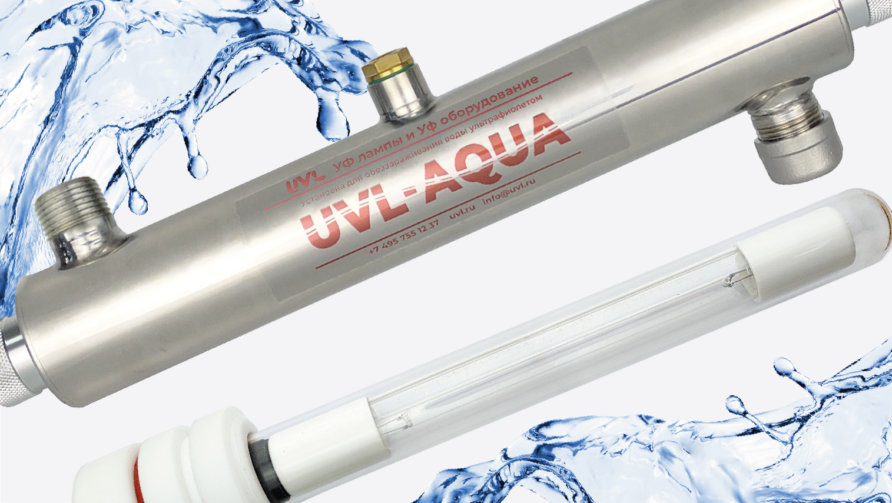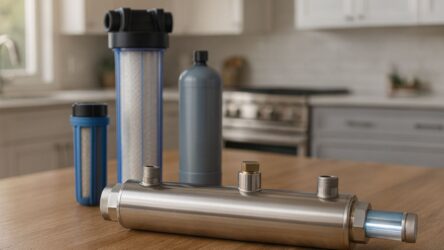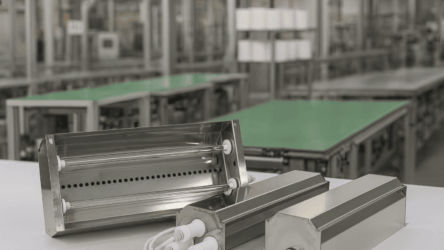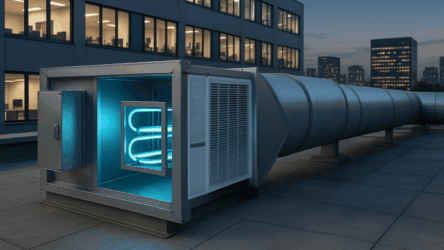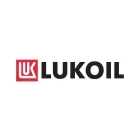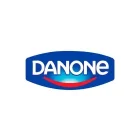The effective operation of recirculating aquaculture systems (RAS) is impossible without high-quality water disinfection. Ultraviolet (UV) sterilizers play a key role in eliminating harmful microorganisms, helping maintain fish health and water purity while reducing the need for chemical treatments. However, the correct selection, installation, and maintenance of UV equipment directly impact its efficiency and lifespan. This article provides guidance on selecting UV installations and offers practical advice on their operation.
Why is UV disinfection necessary in RAS?
On fish farms, UV radiation is used to destroy viruses, bacteria, and protozoa, significantly improving water quality. The advantage of UV treatment is that it targets the DNA of microorganisms without requiring large amounts of chemicals. Studies indicate that this method reduces fish disease rates by 60–80%, making UV exposure a crucial element of water treatment.
How to choose the right UV equipment?
Several key factors must be considered when selecting UV equipment, including water quality, system volume, and tank geometry. The main types of UV installations include:
- Flow-through ultraviolet water sterilizers. These devices treat large volumes of water passing through the system. The choice should be based on water flow rate in m³/hour—the greater the volume, the more powerful the equipment must be to ensure effective disinfection. To select a UV sterilizer for RAS or order a specific model, it is advisable to consult UVL’s technical specialists.
- Submersible modules. These units are placed inside separate tanks, ensuring even water exposure to UV light. Their efficiency depends on the distance between the lamp and the water surface (should not exceed 20 cm). When selecting equipment, tank geometry and water turbidity must be considered—the higher the contamination level, the more powerful the UV lamp required.
Additionally, the selection of a sterilizer is directly related to water quality. Turbidity and suspended particle concentration significantly affect UV treatment efficiency. Studies show that high turbidity reduces UV penetration by 30–50%. Therefore, highly contaminated systems require either more powerful sterilizers or pre-filtration.
Installation tips for UV equipment
Proper installation is crucial for the efficiency and longevity of UV equipment. Here are some key recommendations:
- Install UV sterilizers after filtration. Mechanical filtration removes up to 95% of suspended particles, improving UV light penetration and increasing disinfection efficiency.
- Position the electronic ballast (EPRA) correctly. It should be placed above all other system components to prevent condensation from reaching electrical connections, reducing the risk of equipment failure.
- Create an air loop. This protects electrical connections from moisture and condensation, extending the equipment's lifespan.
Following these installation guidelines will enhance the efficiency of the RAS system.
Maintenance of UV sterilizers
For stable operation, regular maintenance is essential:
- Cleaning quartz sleeves. Deposits and biofouling can form on the surface, reducing UV transmission. Regular cleaning helps maintain system efficiency.
- Replacing lamps. The lifespan of UV lamps is approximately 11,000–16,000 hours. After this period, their effectiveness declines, and they must be replaced.
Why do fish farms use UV sterilization?
UV installations improve water quality on fish farms, reduce chemical usage, and ensure environmental safety. This method does not contribute to microbial resistance and quickly neutralizes pathogens within seconds. Compared to traditional methods, UV treatment reduces fish disease rates by 2–3 times.
UVL offers a wide range of UV lamps and water treatment equipment for RAS, available on the official website. Our specialists can help you select the best solutions for your farm and provide guidance on installation and maintenance.

